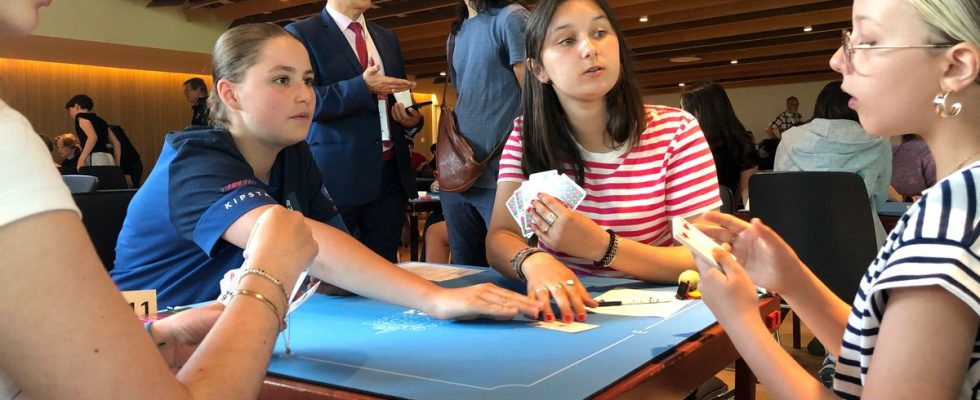Nearly 90 pupils from 3rd and 5th grades playing cards in the same room and in almost perfect silence… The scene is something many teachers dream of. It is very real and lasted for nearly three hours, Thursday morning, in Strasbourg.
On the sidelines of the Transnational European Bridge Open, around a hundred children from the Rouget-de-L’Isle middle school in Schiltigheim had been invited to a mini-bridge tournament. They weren’t starting from scratch before arriving at the Parc des Expositions in the Alsatian capital: everyone had already discovered this discipline… in class.
Since 2012 and the signing of a framework agreement between National Education and the French Federation of Bridge (FFB), it is possible. The ministry considers that this game “constitutes a legitimate and relevant complement to the educational activities offered by the school” and therefore gives its teachers the opportunity to introduce it.
Idrich Akhoun is one of them. This maths teacher within the Schilickois establishment started a little by chance “at the start of the year”. “I didn’t play it at all, but I went to Eduscol, where there are resources to help us, and bridge was offered. I took the gamble because I thought the idea of seeing the students collaborate was brilliant. In addition, they must listen to each other, respect the rules, communicate, be attentive to what is happening… It’s a step aside where they work on skills in a playful way. It takes them out of the routine and they love it! »
” It makes you think “
Really ? Not all. “No, I don’t like it, I don’t see why we’re doing that”, plague Aférie. Opposite her, her partner Mathilde is more measured. “I prefer rummy, but it changes math. A point on which their adversaries, Charlotte and Violette, agree. “It’s nice to be in a duet and to play,” said the first. “We use strategies, it makes you think,” adds the second.
At the next table, two boys are delighted to miss more traditional lessons. “We prefer bridge to math, that’s for sure”, they laugh, without necessarily identifying the interests of this new practice. However, they are multiple, according to Michel Gouy, a former mathematics inspector now converted as a teacher trainer with the FFB.
“It’s a game that really allows you to apply and implement everything you learn,” he sums up. “In bridge, you count, you analyze, you anticipate, you pay attention to your partner… There’s a lot of information to integrate. The rule is simple but with immense game possibilities. At the level of mind sports, it is by far the most complete game. It is a recognized educational tool in the mathematical plan. »
Charles Torossian will not say otherwise. In 2017, he piloted with Cédric Villani the mission on the teaching of mathematics, before submitting their report to the then minister, Jean-Michel Blanquer. “Yes, bridge was mentioned, but it wasn’t just that. It was part of the chapter on games, ”smiles the director of the Institute for Advanced Studies in Education and Training (IH2EF). “Afterwards, we find all the socio-behavioural skills sought here: concentration, attention, consolidation… There, the students have been solving problems on their table in peace for three hours. It’s just exceptional at that age! »
“A challenge to find other ways to learn”
According to the leaders of the FFB, all initiated groups behave in the same way. What encourage other teachers to embark on the adventure? “I tried to talk to my colleagues about it, but it doesn’t connect them,” says Idrich Akhoun. “This teacher has a project and others are committed elsewhere. It is important that this is done on the basis of a commitment and that the energies can be expressed”, adds its rector of the Academy, Oliver Faron.
This does not prevent him, too, from seeing many assets in bridge. “It has two main virtues. The first because it emphasizes a game-sport that allows you to learn and acquire mathematical skills. And the second because it reinforces the well-being of our young people. This is an important dimension for us today, just as it is a challenge to find other ways to learn. »
In France currently, around 10,000 students are already introduced to bridge according to estimates by the FFB. A total that continues to increase.

